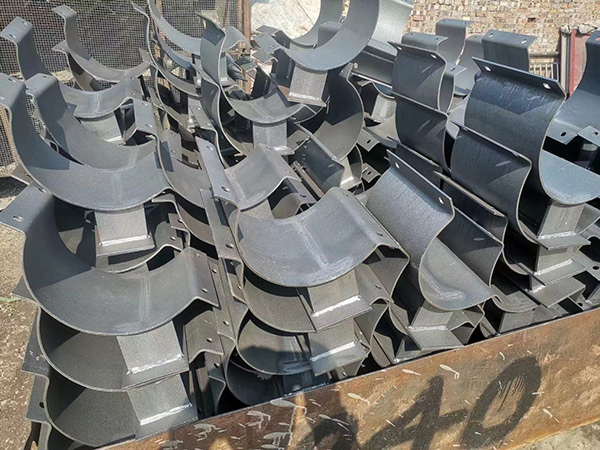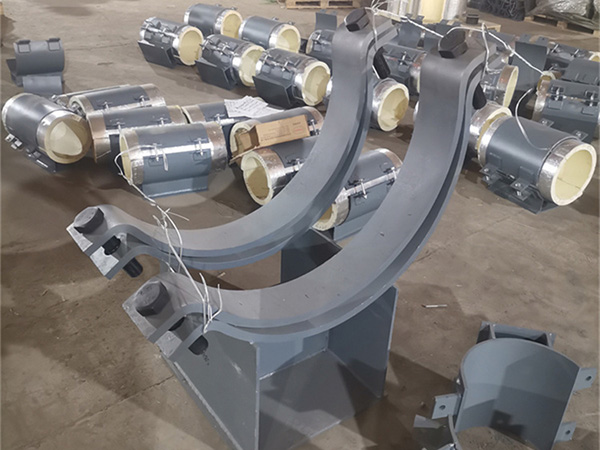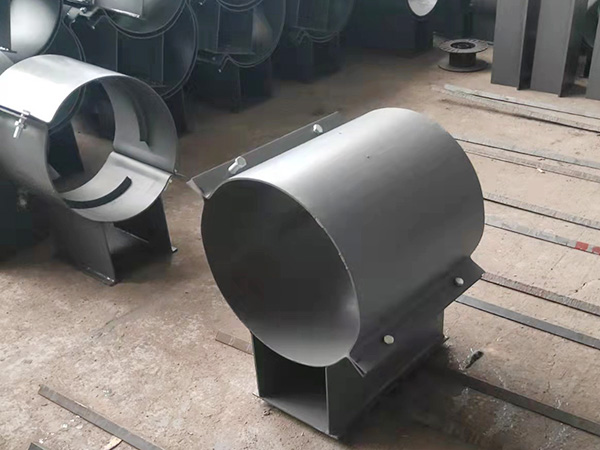Maximizing Pipeline Performance with High‑Efficiency Insulation Brackets: From Concept to Daily Operation
Author:Mingde Time:2025-08-18 13:23:09 Click:93
Why Pipe Support Systems Matter
In today’s industrial pipelines, Pipe Support Systems do much more than simply hold pipes in place. When integrated with high‑efficiency insulation brackets, they contribute to better energy conservation, operational stability, and structural safety. These combined systems are now widely adopted in industries such as oil and gas, chemical processing, and HVAC infrastructure, where both mechanical integrity and thermal performance are critical.


1. What Are High‑Efficiency Insulation Brackets?
High‑efficiency insulation brackets are engineered supports that merge load‑bearing strength with advanced thermal insulation properties.
Unlike traditional pipe supports, these units are specifically designed to:
·Block conductive heat transfer at support points.
·Maintain strong load capacity under extreme temperature fluctuations.
·Resist moisture penetration, reducing corrosion under insulation (CUI).
·Deliver long‑term durability through advanced materials like phenolic composites or engineered polymers.
2. Advantages of Using Insulation Brackets in Pipe Support Systems
When properly integrated into a Pipe Support System, high‑efficiency brackets can provide multiple operational benefits:
1.Lower Energy Loss – Retain stable temperatures along the pipeline, reducing heating or cooling demands.
2.Minimized Maintenance – Lower CUI risk means fewer repairs and longer operational life.
3.Consistent Safety – Keeps thermal conditions stable, reducing the chance of temperature‑induced failures.
4.Improved Reliability – Maintains structural integrity in high‑load and high‑temperature environments.
3. Key Applications
These components are used across various sectors, including:
1.OilGas Transmission
2.Refining and Petrochemical Facilities
3.District HeatingCooling Networks
4.Cryogenic Storage and Transport
5.HVAC Systems in Commercial and Industrial Buildings
4. Designing for Maximum Performance
Achieving the best results with insulation brackets requires a thoughtful Pipe Support System design:
·Load Capacity Analysis – Select brackets that can handle operational loads safely.
·Thermal Expansion Planning – Allow for movement to prevent stress damage.
·Material Selection – Match bracket composition to both the insulation and pipeline environment.
·Precise Spacing – Distribute loads evenly to maintain both mechanical and insulation integrity.
5. Installation Guidelines
·Inspect brackets and insulation components before installation.
·Ensure correct alignment to avoid structural stress points.
·Seal interfaces to block moisture and prevent CUI.
·Perform post‑installation quality checks to verify proper insulation coverage.
6. Maintenance and Monitoring
Even advanced systems require inspection to maintain performance:
·Use thermal imaging to identify potential hot spots.
·Check for corrosion, especially at high‑risk points.
·Assess bracket stability and adjust if any displacement occurs.


7. Looking Ahead: Innovations in Pipe Support Systems
The next generation of Pipe Support Systems may feature:
·Integrated Sensors for real‑time monitoring.
·Advanced Composite Materials for better insulation and strength.
·Pre‑Assembled Units for faster, more consistent installation.
Conclusion
From the planning stage to daily operation, high‑efficiency insulation brackets have become an essential element in modern Pipe Support Systems. They help preserve energy, reduce maintenance needs, and enhance safety in demanding environments. Investing in advanced support technology means building a pipeline infrastructure that is stronger, more efficient, and ready to perform reliably for years to come.
References
GB/T 7714:Malachy Udowo V, Yan M, Liu F, et al. Corrosion under insulation of pipeline steel in groundwater containing sulphate-reducing bacteria[J]. Corrosion Engineering, Science and Technology, 2023, 58(6): 549-560.
MLA:Malachy Udowo, Victor, et al. "Corrosion under insulation of pipeline steel in groundwater containing sulphate-reducing bacteria." Corrosion Engineering, Science and Technology 58.6 (2023): 549-560.
APA:Malachy Udowo V, Yan M, Liu F, et al. Corrosion under insulation of pipeline steel in groundwater containing sulphate-reducing bacteria[J]. Corrosion Engineering, Science and Technology, 2023, 58(6): 549-560.
 Hot Products
Hot Products
 Contact Us
Contact Us
Contact:
Mobile:+86 +86 19133378808
Website:mingdepipe.com
Address:









